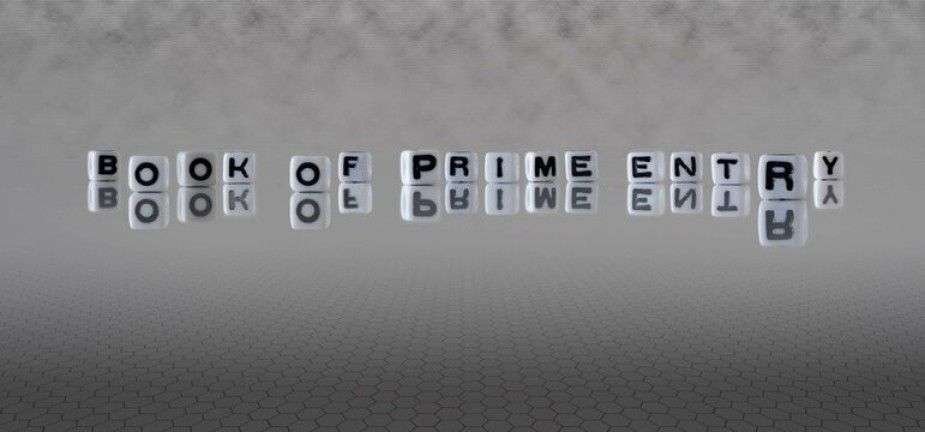The Book of Prime Entry is a fundamental concept in accounting, serving as the initial place where business transactions are recorded. This guide will explain what the book of prime entry is, its importance, the types of books of prime entry, and provide an example for better understanding.
Table of Contents
What is the Book of Prime Entry?
The Book of Prime Entry is the first book where all financial transactions are recorded before they are posted to the ledger accounts. These records are usually organized in a chronological order and provide a detailed description of each transaction. The primary purpose of these books is to capture transaction details accurately and in a timely manner.
Key Features of the Book of Prime Entry
- Chronological Recording: Transactions are recorded in the order they occur.
- Detailed Entries: Each entry includes the date, accounts involved, amounts, and descriptions.
- Foundation for Ledgers: Provides the necessary details for posting transactions to ledger accounts.
Importance of the Book of Prime Entry
1. Accuracy in Recording
Books of prime entry ensure accurate recording of transactions, which is essential for maintaining the integrity of financial information.
2. Facilitating Financial Reporting
They provide a structured and organized way to capture financial data, which is crucial for preparing accurate financial reports.
3. Streamlining the Accounting Process
By recording transactions in the book of prime entry, businesses can streamline the accounting process and reduce the risk of errors when posting to ledger accounts.
4. Legal Compliance
Maintaining proper books of prime entry helps businesses comply with legal and regulatory requirements, as these records can be used for audits and tax reporting.
Types of Books of Prime Entry
1. Sales Journal
The Sales Journal records all credit sales made by the business. It does not include cash sales, which are recorded in the cash book.
Example of a Sales Journal Entry
- Date: January 1, 2024
- Customer: ABC Corp
- Amount: $1,000
- Description: Credit sale of goods
2. Purchases Journal
The Purchases Journal records all credit purchases made by the business. Like the sales journal, it does not include cash purchases.
Example of a Purchases Journal Entry
- Date: January 2, 2024
- Supplier: XYZ Ltd
- Amount: $500
- Description: Credit purchase of raw materials
3. Cash Book
The Cash Book records all cash transactions, both receipts and payments. It serves as both a journal and a ledger for cash transactions.
Example of a Cash Book Entry
- Date: January 3, 2024
- Description: Payment to supplier
- Amount: $200
- Balance: $800 (remaining cash)
4. Sales Returns Journal
The Sales Returns Journal records all returns of goods sold on credit. This helps in adjusting the sales figures accurately.
Example of a Sales Returns Journal Entry
- Date: January 4, 2024
- Customer: ABC Corp
- Amount: $100
- Description: Return of damaged goods
5. Purchases Returns Journal
The Purchases Returns Journal records all returns of goods purchased on credit. This helps in adjusting the purchase figures accurately.
Example of a Purchases Returns Journal Entry
- Date: January 5, 2024
- Supplier: XYZ Ltd
- Amount: $50
- Description: Return of defective materials
6. General Journal
The General Journal records all other transactions that do not fit into the specific journals mentioned above. It includes adjustments, corrections, and unique transactions.
Example of a General Journal Entry
- Date: January 6, 2024
- Accounts: Depreciation Expense and Accumulated Depreciation
- Amount: $300
- Description: Monthly depreciation expense
How to Use the Book of Prime Entry
Step-by-Step Process
- Identify the Transaction: Determine the nature of the transaction (e.g., sale, purchase, payment).
- Select the Appropriate Journal: Choose the correct book of prime entry based on the type of transaction.
- Record the Transaction: Enter the date, accounts involved, amounts, and a brief description in the selected journal.
- Post to Ledger Accounts: After recording in the book of prime entry, the transaction details are posted to the respective ledger accounts.
Example of Using the Book of Prime Entry
Let’s consider a fictional business, “Bright Electronics,” to understand how the book of prime entry is used.
Step-by-Step Recording
- Sale Transaction: On January 10, 2024, Bright Electronics sells goods worth $2,000 on credit to a customer, Tech Solutions.
- Sales Journal Entry:
- Date: January 10, 2024
- Customer: Tech Solutions
- Amount: $2,000
- Description: Credit sale of electronics
- Purchase Transaction: On January 11, 2024, Bright Electronics purchases raw materials worth $1,000 on credit from Supplier Inc.
- Purchases Journal Entry:
- Date: January 11, 2024
- Supplier: Supplier Inc
- Amount: $1,000
- Description: Credit purchase of raw materials
- Cash Receipt: On January 15, 2024, Tech Solutions pays $2,000 for the goods purchased.
- Cash Book Entry:
- Date: January 15, 2024
- Description: Payment received from Tech Solutions
- Amount: $2,000
- Balance: Updated cash balance
- Purchase Return: On January 20, 2024, Bright Electronics returns defective raw materials worth $200 to Supplier Inc.
- Purchases Returns Journal Entry:
- Date: January 20, 2024
- Supplier: Supplier Inc
- Amount: $200
- Description: Return of defective raw materials
Conclusion
The Book of Prime Entry is an essential tool for recording and organizing business transactions. By understanding the different types of books of prime entry and how to use them, businesses can ensure accurate and systematic recording of financial data. This foundational step in accounting not only facilitates effective financial management but also ensures legal compliance and supports informed decision-making.
References
- AccountingCoach. (n.d.). Book of Original Entry.
- Investopedia. (n.d.). Journal.





